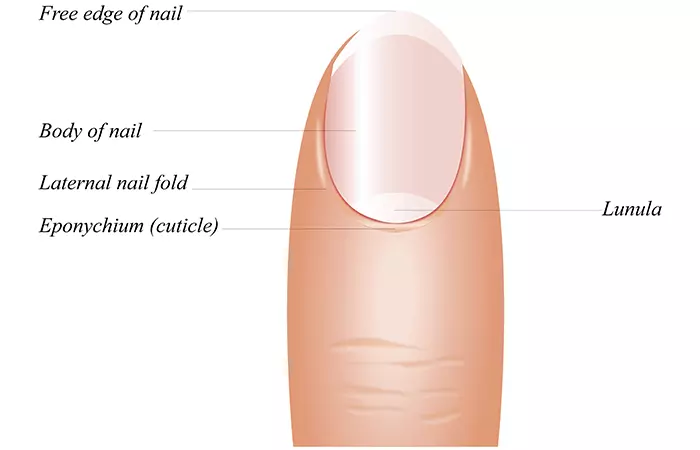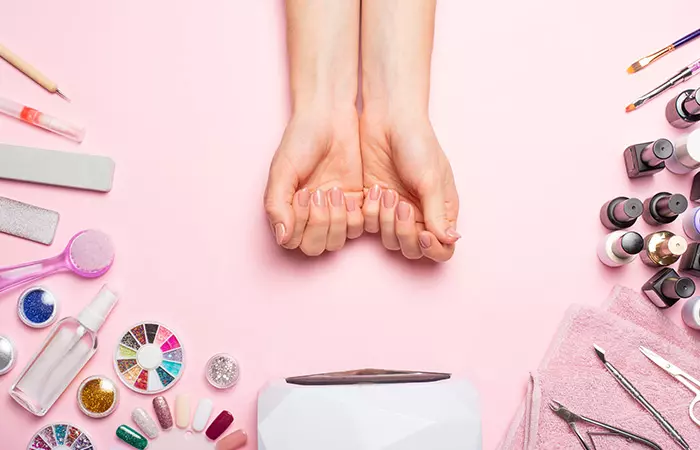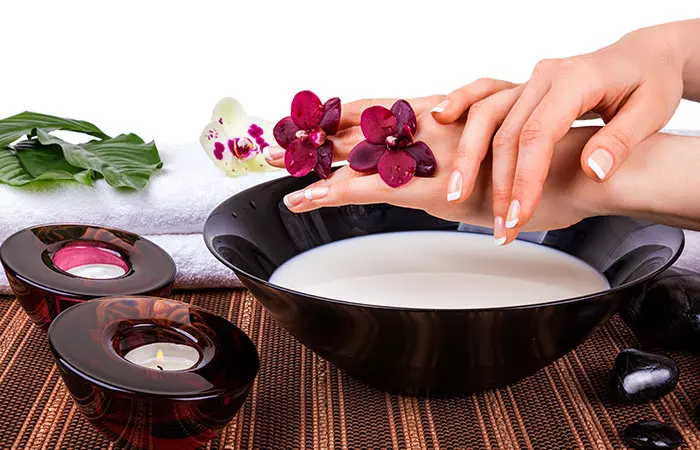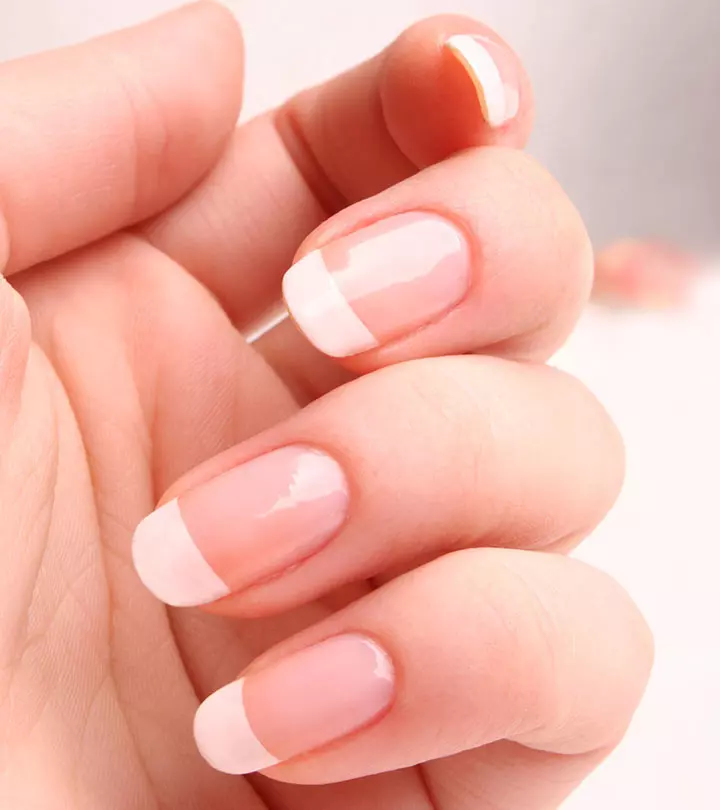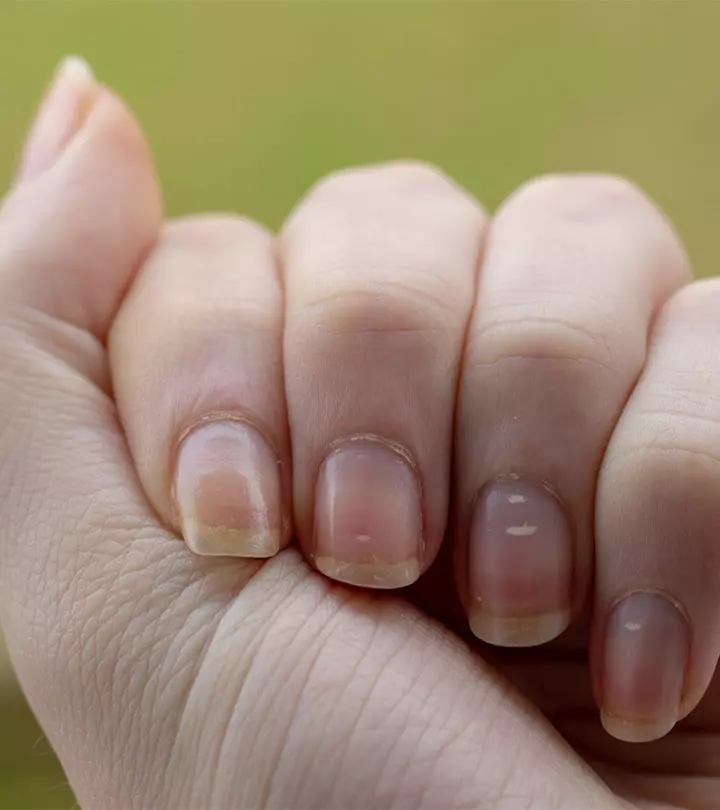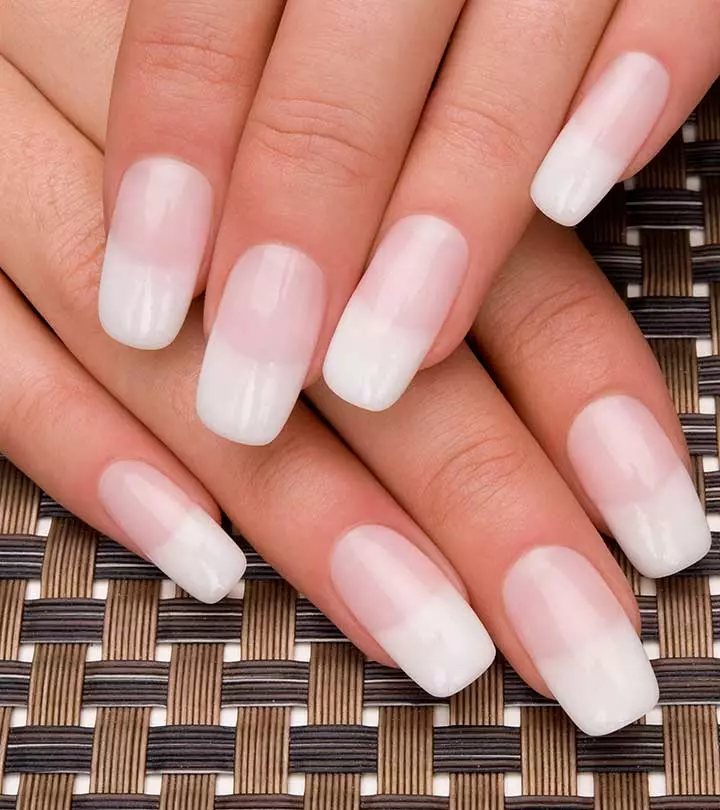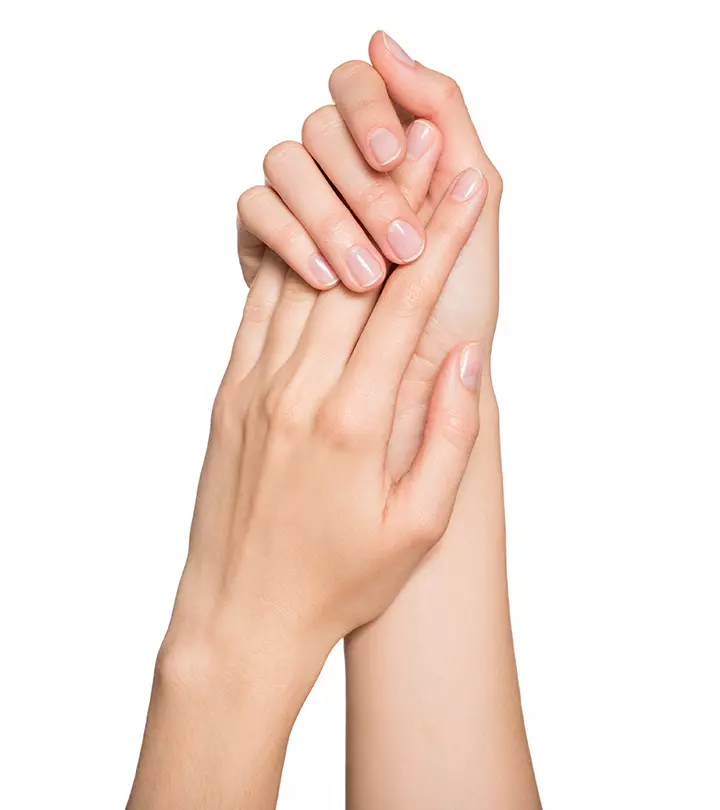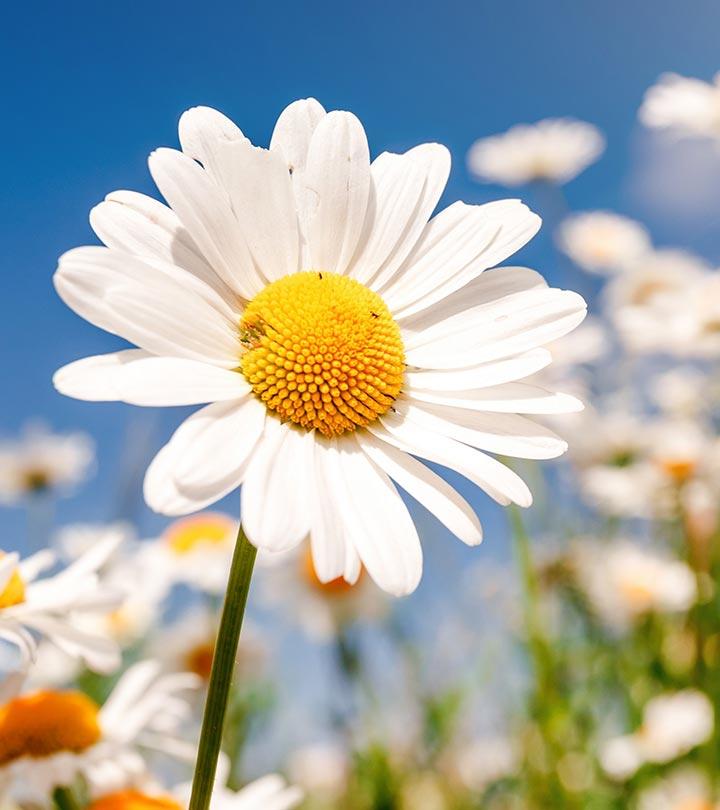Cuticles: What Are They And How To Care For Them?
Keep these often-overlooked nail parts happy with enough pamper, protection, and care.

Image: Shutterstock
Your cuticles are just as crucial as your nails. But, what are cuticles?
The clear layer of skin at the lower edge of the nail is the cuticle. This layer also acts as a shield for the nail when it emerges from the base. Your nails are more prone to infection when your cuticles are injured. Also, strong nails don’t look as attractive when they are lined by rough, flaky skin. Some people like to cut their out cuticles, while others tend to push them back. Which path should you take? Why should you take care of your cuticles at all? This article has the answers to all of these questions. Just keep reading!
In This Article
What Are Cuticles? Why Are They Important?
If you look closely at your nails, you will see a layer of skin around the edge of the nails that overlaps the nail base. This layer of skin is known as the cuticle. Although the cuticle contains dead skin cells, it serves an important purpose.
To understand the purpose, you need to first understand the anatomy of your nail. If you look closely at the diagram above, you will see that right below the cuticle is a line of skin bordering the base of the nail bed, called the proximal nail fold. The proximal nail fold is attached to the surface of the nail plate, and the cuticle is a part of the former. The only difference is that the cuticle is made of dead skin cells, while the proximal nail fold is made of living skin cells.
Often people confuse the lunula – the half-moon shape that you see at the nail base – with the cuticle. The lunula is located above the cuticle.
Nail cuticles are essential because they protect the nail matrix from infections. If there were no cuticles, dirt and bacteria could easily find their way to the nail matrix and cause serious issues.
When you go for a manicure, you will often see the manicurist remove the nail cuticle. Now, this raises a lot of questions. While some people prefer to remove them altogether (so that the nail polish sits evenly), others simply push them back. Which is the right way? Is it okay to remove the cuticles? Find out in the next section.
Is It Okay To Remove Your Cuticles?
Many people have the habit of picking on their cuticles. Many manicurists prefer to remove them to make your mani look perfect. However, removing cuticles is an absolute no-no. Cuticles act as a barrier between the living skin and the nail bed. Once the seal is broken, microorganisms and foreign bodies can easily get in and infect the area. The American Academy of Dermatology does not encourage cutting or trimming the cuticles (1).
The best thing to do is to gently push the cuticles in without removing them. After that, you can remove any excess bits that remain. However, be careful to not put excess pressure when pushing in your cuticles as they are quite delicate. Follow these tips to trim or push your cuticles safely.
How To Trim Your Cuticles Safely
- Remove nail polish with a nail polish remover.
- Soak your nails in warm water to soften the cuticles.
- Apply cuticle remover. If the cuticles are dry, apply moisturizer.
- Use a cuticle pusher to push the cuticles gently.
- Trim any excess skin and hangnails. Avoid cutting the entire cuticle.
You need to take care of your cuticles to avoid any damage to them. Cuticle damage can be easily prevented. Even if you manage to damage them, there are ways to take care of them. In the next section, we have discussed everything you need to know about cuticle care.
Damaged Cuticles: How To Care For Them
Don’t wait for your monthly visit to the salon to take care of your cuticles. You can regularly follow these simple tips to prevent any damage to them.
1. Never Cut Your Cuticles
As we mentioned earlier, removing the cuticles will make you vulnerable to nail infections. This can affect your nail health and growth.
2. Use An Orange Stick To Push Cuticles
If you don’t want to leave your cuticles as they are, try pushing them back instead of removing them. Use an orange stick to push them back gently. Cutting the cuticles can harden them over time. This will also increase their chances of splitting while they regrow.
3. Keep The Cuticles Moisturized
Cuticles are a part of your skin. Just like your skin, they dry out, flake, and peel. Any moisturizer is good for the cuticles. Whether you are using an oil, a hand cream, or a body moisturizer, don’t forget to massage some on your cuticles.
4. Keep Your Hands Protected From Drying Agents
This includes dishwashing liquids, nail polish remover, and hand sanitizers. Try to protect your hands from these agents as these may dry out your skin and cuticles. Whenever you use any of these products, make sure that you moisturize your hands and cuticles later. This will protect your skin from the drying effects of these products.
Also, stop picking on your cuticles with your teeth or nails. If you have hangnails, use tweezers or nail clippers to remove them. Never rip them off or bite them. There are several ways to keep your cuticles soft and prevent them from drying and cracking. Check them out below.
Tips To Keep Your Cuticles Soft
- Use A Hand Cream
Whether you are at home or traveling, always carry a hand cream and keep your hands moisturized at all times. Hand creams keep the skin on your hands soft and moisturized and prevent your cuticles from drying out.
- Use Thick Creams
Thick creams and moisturizers provide better moisturization to the skin and cuticles. Pick products that contain jojoba oil, macadamia oil, shea butter, or cocoa butter.
- Get A Hot Wax Treatment
You can get a hot wax treatment done at any salon. In this treatment, your hands are dipped into warm wax. Then, gloves are put on your hands to trap the heat for at least 15 minutes. At the end of this treatment, you are left with soft nails and cuticles.
You can also use some DIY recipes to take care of your cuticles. Check them out!
DIY Recipes To Care For Your Cuticles
1. Beeswax, Honey, And Apricot Cream
You Will Need
- 3 tablespoons of beeswax pellets
- 3 tablespoons of apricot oil
- 1 tablespoon of honey
Method
- Put all the ingredients in a bowl.
- Microwave it for 15 seconds or until the ingredients melt completely.
- Pour the mixture in a container and wait until it cools down.
- Massage your cuticles with this DIY cream. Use it as required.
2. Coconut And Lavender Soak
You Will Need
- 2 tablespoons of coconut oil
- 1-2 drops of lavender oil
Method
- Melt the coconut oil
- Mix the lavender oil in it.
- Soak your nails in the oil for 15 minutes.
- Take your fingers out and massage them with the leftover oil.
- Wash your hands with warm water.
3. Lemon And Olive Oil Soak
You Will Need
- 2 teaspoons of petroleum jelly
- 2-3 drops of lemon juice
- ½ teaspoon of olive oil
Method
- Mix all the ingredients.
- Soak your cuticles in the mixture
- For 10-15 minutes before washing it off.
Taking care of cuticles is as important as your nails. Any injury to your cuticles may lead to nail infections. If not for the cuticles, dirt and bacteria easily enter the nail matrix and cause infections. Though people prefer cutting the cuticles, the best practice is to push them back without removing them. However, if your cuticles are damaged, you may take care of them by keeping them moisturized, protecting them from drying agents, and pushing them back with orange sticks. Follow the DIY recipes mentioned here to protect your cuticles and prevent infections.
Frequently Asked Questions
Why are my cuticles black?
The following factors could cause dark cuticles:
• Dehydration
• Vitamin B deficiency
• Environmental factors such as excessive cold or sun exposure
• Excessive washing of hands with soap/detergents
• Unhygienic habits like biting nails and sucking thumb
• Some medical problems, such as fungal infection, heart illness or kidney issues, skin cancer, and so on, can cause the skin around the nails to darken. In such circumstances, seek medical advice to address the underlying issue.
What are overgrown cuticles?
Your cuticle is termed overgrown when it extends beyond your proximal fold and covers a portion of your nail. The proximal fold is a fold of skin at the base of your nail plate. Cuticle overgrowth is usually unattractive but causes no concerns. However, an unmanaged overgrowth can sometimes cause other problems. Maintain proper nail hygiene by bathing and hydrating your cuticles and gently pushing them back as needed. This will help maintain your cuticle health and avoid overgrowth.
Is Vaseline good for cuticles?
Vaseline petroleum jelly is an excellent salve for cuticle restoration and protection. The American Academy of Dermatology suggests petroleum jelly (Vaseline) as an economical option to care for cuticles (2).
Key Takeaways
- The cuticle is the clear layer of skin at the lower edge of the nail.
- The cuticles of the nails are necessary because they protect the nail base from infections.
- It is advisable to gently push the cuticles in without removing them. After that, you can scrape away any remaining bits.
References
Articles on StyleCraze are backed by verified information from peer-reviewed and academic research papers, reputed organizations, research institutions, and medical associations to ensure accuracy and relevance. Read our editorial policy to learn more.
- Artificial nails: Dermatologists’ tips for reducing nail damage. American Academy of Dermatology.
https://www.aad.org/public/skin-hair-nails/nail-care/artificial-nails - 5 WAYS TO USE PETROLEUM JELLY FOR SKIN CARE
https://www.aad.org/public/everyday-care/skin-care-secrets/routine/petroleum-jelly


